Breaking Heinlein’s Third Rule: Exercises for Revision
In his 1947 essay, “On the Writing of Speculative Fiction,” Robert Heinlein famously delivered his Rules for Writing:
1. You must write.
2. You must finish what you write.
3. You must refrain from rewriting, except to editorial order.
4. You must put the work on the market.
5. You must keep the work on the market until it is sold.
And, in fact, four of these fives rules apply to all writers at all times. But the third… well, the third only applies if you’re Robert Heinlein, and even then I suspect he’s talking about not tinkering with finished manuscripts and not about publishing first drafts. In fact, I have never seen another author suggest that revision isn’t a critical part of the process.
Neil Gaiman’s rules for writing, published as part of the multi-authored article “Ten Rules for Writing Fiction” on The Guardian’s website on February 20th, 2010, begin much the same way Heinlein’s do:
1. Write.
2. Put one word after another. Find the right word, put it down.
3. Finish what you’re writing. Whatever you have to do to finish it, finish it.
But his next three rules are all about revision:
4. Put it aside. Read it pretending you’ve never read it before. Show it to friends whose opinions you respect and who like the kind of thing that this is.
5. Remember: when people tell you something’s wrong or doesn’t work for them, they are almost always right. When they tell you exactly what they think is wrong and how to fix it, they are almost always wrong.
6. Fix it. Remember that, sooner or later, before it ever reaches perfection, you will have to let it go and move on and start to write the next thing. Perfection is like chasing the horizon. Keep moving.
As the judge of last year’s contest, I will say that we saw in the early crop of entries—those that arrived in the first month or so that we were accepting submissions—many very promising stories that, had the author taken a little more time in revision, might have been strong contenders for the prize. And so, to help this year’s entrants, I would like to share a few of my favorite revision strategies.
Read Everything Aloud to Yourself: The first thing I do after writing a chunk of an essay or story is to sit down and read the entire piece out loud. This has two benefits. First, it slows you down, and this allows you to notice little grammatical errors, the unintended repetition of words, verb tense changes, and the like. Because you know what you meant to put on the page, it’s very easy to read what you intended to write rather than what you actually wrote. For instance, in the introduction to this piece, I had originally written “if your Robert Heinlein” instead of “if you’re Robert Heinlein.” That’s exactly the sort of mistake I tend only to miss when I’m rereading silently (and so quickly), but catch when I slow down to read aloud. The second benefit is that, in listening to your piece as you read it, you’ll hear it a new way. It’s very difficult to move from being the writer of a piece to being one of its readers. Listening to your work, rather than reading it, is a small step toward having that necessary distance.
Develop A Small Circle of Trusted Readers: Feedback from readers is critical to finding the problems in your work that you can’t see because you’re too close to it. (See Gaiman’s fourth and fifth rules.) But picking the right readers is critical and can be difficult. Here are my suggestions:
- Keep the number of people with whom you share work-in-progress to a manageable number. I have three trusted readers, and that works well for me. It’s enough for me to see which issues are common to all the readers, but not so many that I’m sifting through pages of conflicting feedback.
- Pick writers whose work you admire and whose work is not completely dissimilar to your own. All three of my trusted readers are more accomplished writers than I am and all three of them write often—if not primarily—in my genre. All three have different strengths, and these are reflected in their own works.
- Always repay the favor somehow. The trusted reader relationship isn’t always reciprocal; some of the people who read for me don’t show me their early drafts. They have their own readers, and often those readers don’t show them their own early work either. So find other ways to show your gratitude. Me, I grow tomatoes, bake pies, and offer to buy lunch when they are ready to share their comments. Remember, this is work for your readers. Always say thank you.
- Say yes when someone asks you to be one of her trusted readers, but only if you enjoy reading her work.
- Many of us, particularly as new writers, don’t really know a lot of other writers we can ask to be part of our circles. There are a number of very good online workshops, and these can be great places to find those people, but these sites have their own dangers. Because you don’t have control over who reviews your work, you’ll get a certain number of “garbage reviews” and these can harm, rather than help, your writing. Learn to recognize both unearned praise and overly harsh or unhelpful criticism. Be mindful that many reviewers may not yet themselves be particularly polished writers. And always, always, always ignore the reviewers who apply a set of arbitrary rules—never use adverbs, don’t use the word “suddenly,” always start in the middle of the action—to every work they review. And, if you are workshopping a book-length piece, keep in mind that your reviewers are reading your work episodically. When you have a strong draft of the entire work, ask a few of the people who’ve been most helpful to you if you can email them the full work to critique. Things will show up for them when they read the piece as a whole that chapter-by-chapter reviewers will miss.
Do At Least One Round of Edits from a Printed Copy: When you are happy with the work on the screen, print it out and look at it again on the page. Like reading aloud, this slows you down—you have to write your comments in the margins instead of being able to make changes instantly—and, for me at least, that again makes certain kinds of mistakes easier to spot. Consider cutting up the manuscript and moving pieces of it around. Does this character description fit better on page three than it does on page seven? How does the story read if I cut out the paragraph about the main character’s childhood dog all together? Having something physical to work with opens up all sorts of possibilities.
Don’t Start Revising After the First Form Rejection: Getting a rejection letter from an editor doesn’t mean that your story isn’t any good. Form rejections that offer no suggestions only mean that particular editor didn’t feel the piece was right for that particular publication at that particular time. I guarantee you that we’re going to reject several very publishable stories this year because we only have room for one piece. Personally, I don’t consider revision until I get ten form rejections. (I usually submit to five journals at a time, which often means that a piece is at least a year old before I consider revising it based on rejections.) Reactive editing, particularly when you’re reacting to rejection without feedback, is like chasing your own tail.
If you’re lucky enough to get a personal rejection from an editor, take the recommendations made seriously but—unless the editor offers to reconsider the piece if you make the suggested edits—don’t assume you have to make all the recommended revisions. The exception to this is when the suggestions deal with basic craft issues. If an editor says she liked your piece, but couldn’t get beyond all the misspellings and grammatical errors, then by all means root those out. But if she says she found the ending a little too abrupt, or the main character unsympathetic, it’s perfectly alright to decide that you want an abrupt ending or a difficult protagonist. Never forget that this is your work.
Don’t Forget Gaiman’s Sixth Rule: “Remember that, sooner or later, before it ever reaches perfection, you will have to let it go and move on and start to write the next thing. Perfection is like chasing the horizon. Keep moving.” Let the piece sit for a while between drafts, revise until you’re happy with the work, and then start sending it out for publication. If you wait until you feel the work is perfect, you’ll be writing the same story forever.
I hope these suggestions are helpful to you, and I am really looking forward to reading your entries in this year’s contest. If you have other revision strategies that work for you, please share them with us by posting them in the comments section following this essay. What works for me may not be what works for you, and the more we share ideas the better all of our writing becomes.
The End
Sarah Einstein is a Puschart Prize winning author whose work has appeared in PANK, Fringe, Ninth Letter, Whitefish Review, and other literary journals. She is pursuing a Ph.D. in Creative Writing at Ohio University.








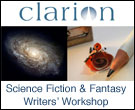



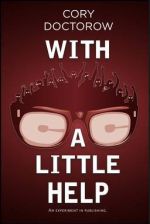
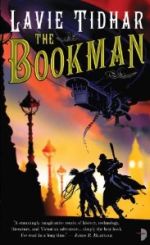
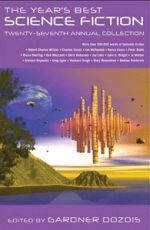
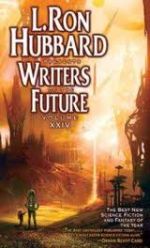

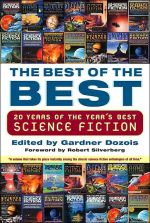

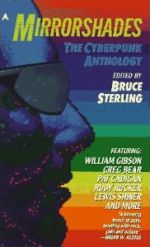
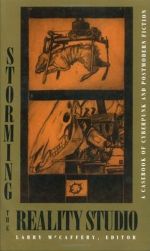



5 comments
[…] a break from working on your story and read her outstanding craft essay about revising your work, Breaking Heinlein’s Third Rule. We’re so pleased to have Sarah back on board this summer. She finished her MFA and is moving […]
[…] Breaking Heinlein’s Third Rule: Exercises for Revision by Sarah […]
I think the hardest part for me is definitely finishing no matter what – especially the case for a novel. There are lots of half-baked ideas, plot summaries and character descriptions sitting round in my files, plus one finished, but abandoned, novel, another half-written, and hopefully one soon to be finished – about 4/5 of the way through, but there’s always so much temptation to think that maybe the idea for the novel wasn’t the best and wouldn’t it be cooler to start writing something else instead.
I’ve found reading a piece with some annoying background noise/distraction like the TV destroys my enjoyment (my authorial attachment and bias) of the piece, forcing me to read in a more objective and critical way. It’s hard to do though because it’s so not fun. More a thought than a recommendation maybe…
Mark,
I’m with you on that. I think new ideas are often the greatest enemy of works-in-progress. They’re still so shiny and untarnished by the reality of moving from concept to realization.
Chris,
I’m one of those people who can focus over the TV, but I do the same thing. I have a friend (who I really hope either doesn’t read this or doesn’t realize I’m talking about her!) who has a terrible reading voice, and I will sometimes ask her to read a piece for me so I can have that same experience. Text-to-speech software also works, and is maybe kinder!